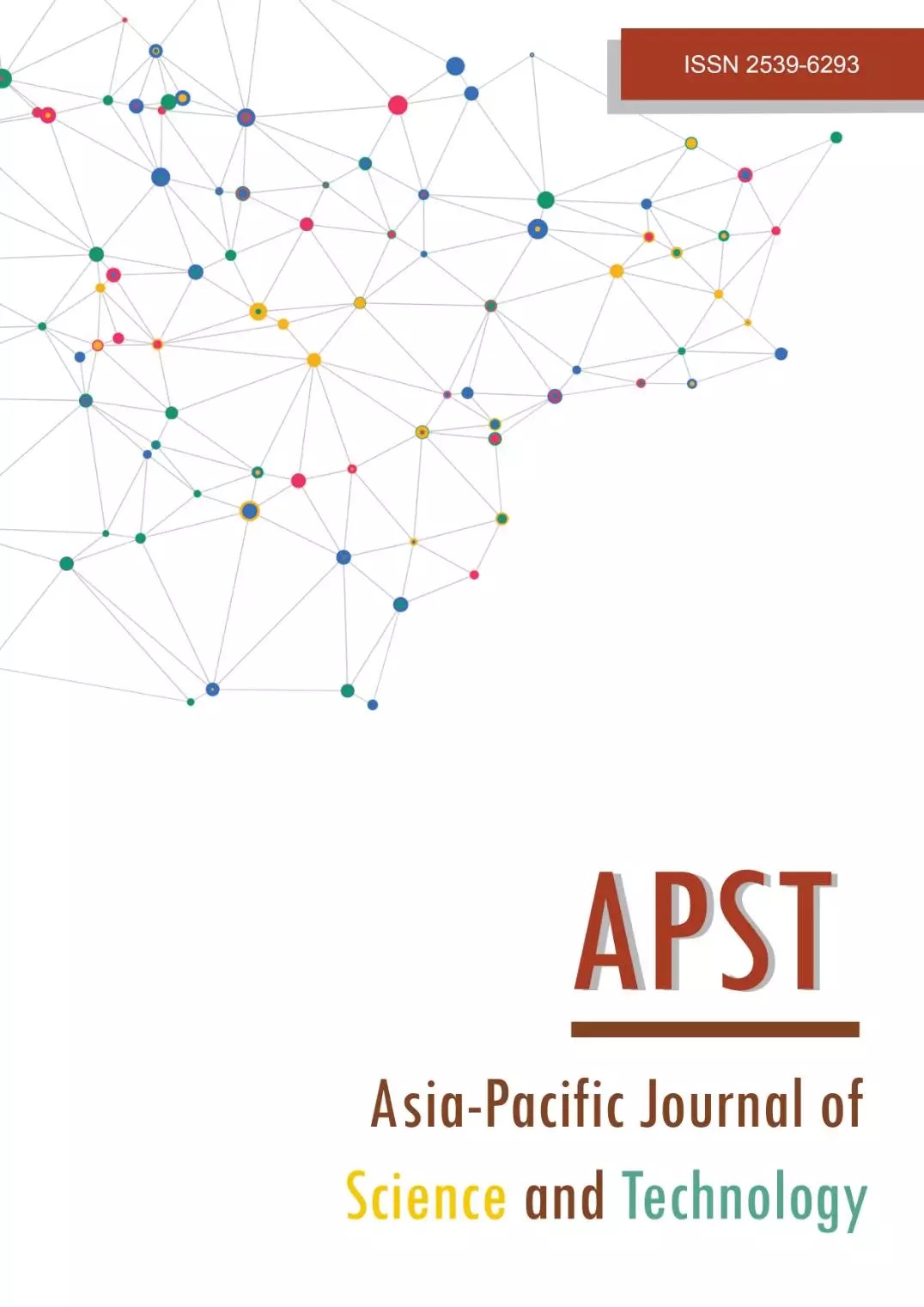Establishment of reference intervals in biochemistry parameters from check-up records: AMS Medical Laboratory, Khon Kaen
Main Article Content
Abstract
Reference intervals are used as a decision-making tool to distinguish healthy individuals from those with specific diseases. Due to the variations among laboratories, reagent manufacturers, ethnic backgrounds, gender, and age, laboratories were recommended to develop their own reference intervals. Moreover, under the international standard requirement, laboratories should review their own reference intervals periodically. This study aims to re-establish the reference intervals of 10 common biochemistry parameters including glucose, BUN, creatinine, total cholesterol, triglyceride, HDL-c, LDL-c, AST, ALT, and ALP. The study was based on the retrospective dataset retrieved from AMS Medical Laboratory, Khon Kaen University. The 1,543 records of each parameter were tested for variation among age and gender subgroups prior to calculation of the reference intervals. The data showed no variation against male and female subgroups, while slightly increased values were observed in the aging subgroup. Age-dependent reference intervals were established in 6 parameters with >95% acceptance, while ranges of lipid profiles still rely on the NCEP guidelines. The findings emphasized the importance of age-affected reference intervals for populations. Moreover, the flexibility of new reference intervals was appropriate for an aging society and may motivate greater healthcare awareness.
Article Details

This work is licensed under a Creative Commons Attribution-NonCommercial-NoDerivatives 4.0 International License.
References
Katayev A, Balciza C, Seccombe DW. Establishing reference intervals for clinical laboratory test results: Is there a better way? Am J Clin Pathol. 2010;133:180-186.
Omuse G, Ichihara K, Maina D, Hoffman M, Kagotho E, Kanyua A, et al. Determination of reference intervals for common chemistry and immunoassay tests for Kenyan adults based on an internationally harmonized protocol and up-to-date statistical methods. PLoS One. 2020;15:1-19.
Jones GRD, Haeckel R, Loh TP, Sikaris K, Streichert T, Katayev A, et al. Indirect methods for reference interval determination - Review and recommendations. Clin Chem Lab Med. 2019;57:20-29.
Ozarda Y, Higgins V, Adeli K. Verification of reference intervals in routine clinical laboratories: Practical challenges and recommendations. Clin Chem Lab Med. 2019;57:30-37.
Abebe M, Melku M, Enawgaw B, Birhan W, Deressa T, Terefe B, et al. Reference intervals of routine clinical chemistry parameters among apparently healthy young adults in Amhara national regional state, Ethiopia. PLoS One. 2018;13:1-13.
Adeli K, Higgins V, Seccombe D, Collier CP, Balion CM, Cembrowski G, et al. national survey of adult and pediatric reference intervals in clinical laboratories across canada: a report of the CSCC working group on reference interval harmonization. Clin Biochem. 2017;50:925-935.
Li X, Wang D, Yang C, Zhou Q, Zhuoga SL, Wang LQ, et al. Establishment of age- and gender-specific pediatric reference intervals for liver function tests in healthy Han children. World J Pediatr. 2018;14:151-159.
Yotsakullert C, Klongkayan A, Wongwattanakul M, Daduang J, Jearanaikoon P, Tippayawat P. Clinical chemistry normal ranges of healthy adult population in Nong Khai, Thailand. Arch AHS. 2020;32:1-12.
World Medical Association. Declaration of Helsinki: ethical principles for medical research involving human subjects. J Am Med Assoc. 2013;310:2191-2194.
Ozarda Y. Reference intervals: current status, recent developments and future considerations. Biochem Medica. 2016;26:5-16.
Sasse EA, Doumas BT, Miller WG, Orazio PD, Eckfeldt JH, Evans SA, et al. How to Define and Determine Reference Intervals in the Clinical Laboratory-approved guideline: Vol. 20 No.13. 2nd ed. Pennsylvania: Clinical and Laboratory Standards Institute; 2000.
Castellone DD. Establishing reference intervals in the coagulation laboratory. Int J Lab Hematol. 2017;39:121-127.
Mikolaenko I, Benson E, Konrad RJ, Chaffin C, Robinson CA, Hardy RW. Evaluation of the Beckman Coulter LX20 clinical chemistry analyzer. Lab Med. 2000;31:387-393.
Prati D, Taioli E, Zanella A, Torre DE, Butelli S, Vecchio E, et al. Updated definitions of healthy ranges for serum alanine aminotransferase levels. Ann Intern Med. 2002;137:1-9.
Mukaiyama K, Kamimura M, Uchiyama S, Ikegami S, Nakamura Y, Kato H. Elevation of serum alkaline phosphatase (ALP) level in postmenopausal women is caused by high bone turnover. Aging Clin Exp Res. 2015;27:413-418.
Feng L, Nian S, Tong Z, Zhu Y, Li Y, Zhang C, et al. Age-related trends in lipid levels: a large-scale cross-sectional study of the general Chinese population. BMJ Open. 2020;10:e034226.
Chamnanpai S, Charuruks N, Watanaboonyoungcharoen P, Kalayanachati A. Reference intervals of clinical chemistry parameters in adults at King Chulalongkorn Memorial Hospital. Chula Med J. 2004;48(8):521-529.
Xu R, Zhang LX, Zhang PH, Wang F, Zuo L, Wang HY. Gender differences in age-related decline in glomerular filtration rates in healthy people and chronic kidney disease patients. BMC Nephrol. 2010;11:1-7.
Denic A, Glassock RJ, Rule AD. Structural and functional changes with the aging kidney. Adv Chronic Kidney Dis. 2016;23:19-28.
Pyrkov TV, Avchaciov K, Tarkhov AE, Menshikov LI, Gudkov AV, Fedichev PO. Longitudinal analysis of blood markers reveals progressive loss of resilience and predicts human lifespan limit. Nat Commun. 2021;12:1-10.
John OO NE. Quantile regression: a robust alternative to least squares. Sci Africana. 2009;8:61-65.


